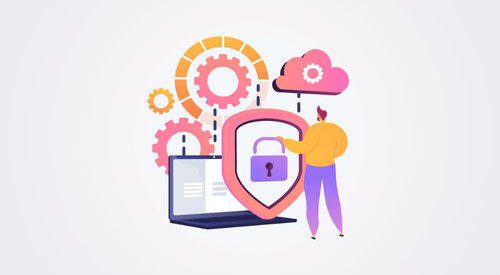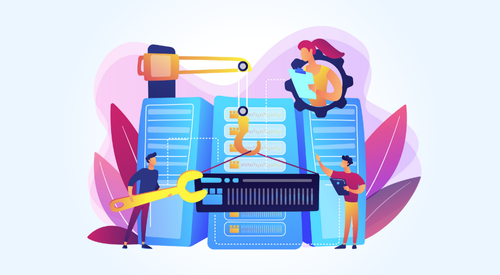

Cloud-native technologies have become essential for modern enterprises, with 85% of organizations reporting that they are moving toward cloud-native applications for agility and scalability. However, this has brought up particular security dilemmas that traditional security methods aren’t competent for. Cloud-native security has become a prime necessity for protecting dynamic, distributed cloud environments.
Achieve End-to-End Cloud-Native Security with Niveus
As organizations increasingly transition to cloud-native infrastructures, ensuring security across the entire application lifecycle has become more complex. Traditional security tools and methodologies fall short in addressing the unique challenges posed by microservices, containers, and serverless architectures. Cloud-native security is essential for mitigating these new risks, offering specialized solutions that are agile, automated, and deeply integrated into the cloud-native development processes. With the right approach and tools, businesses can ensure comprehensive protection across their cloud environments. In this blog, we will explore the best practices and solutions in safeguarding cloud-native applications
What is Cloud-Native Security?
Cloud-native security refers to the methods and processes specifically designed to secure cloud environments which are typically built using microservices, containers, and serverless architectures. Traditional security models often come up short because they weren’t designed for the highly dynamic and ephemeral characteristics of cloud-native infrastructure. Cloud-native security, however, is built with flexibility, scalability, and integrated into the development pipeline from the very beginning. It covers the lifecycle of application security, from development to deployment. This is where and how modern development organizations detect and mitigate risks early.
What are the Key Components of Cloud-Native Security?
Cloud-native security is a package of various major components that ensure overall security. At the foundational level, container security is more central to cloud-native architecture. Network security safeguards the communication between services within an application, especially considering microservices proliferation. IAM is in charge of access rights towards resources to prevent unwanted interference with sensitive information.
All of these elements must be taken care of as individual pieces work in collaboration to form a robust defense against potential breaches. Containers, networks, and identities all need to be secured within the modern cloud-native environment.
Automation’s Role in Cloud-Native Security
Automation plays a crucial role for cloud-native security as it not only detects vulnerabilities but responds to threats much more quickly. Automated security tools scan for misconfigurations, vulnerabilities, and policy violations in real time. This allows teams to remediate issues before they compromise the security environment.
While improving the security outcome, automation will also save on some manual manipulation efforts so that teams are freed up for more strategic security initiatives.
Common Threats in Cloud-Native Environments
Cloud-native environments introduce novel risks compared to the ones that are encountered on conventional infrastructures. Where organizations are shifting towards cloud-native architectures, unique risks to the same involve under configurations, supply chain attacks, and data breaches. The security solutions available for cloud-natives should be able to address these emerging threats and secure applications end-to-end.
Understanding these threats will enable organizations to proactively counter them to maintain their cloud-native applications.
Misconfigurations
Misconfiguration is a common vulnerability in cloud-native environments. As cloud-native applications deploy fast, security settings may get overlooked or misconfigured. This consequently puts data, open ports, and improperly secured services at risk.
Cloud-native security tools ensure that these misconfigurations are detected and corrected before bad actors can exploit them, making them the necessity of the day.
Configuration setting audit tools that run automatically to compare the configuration with best practices would help reduce the chances of a security breach to a great extent.
Supply Chain Attacks
Cloud-native environments are now experiencing supply chain attacks, particularly when third-party libraries, containers, or dependencies are involved. The attackers inject the malicious code, which is activated once the application is deployed and spreads easily across the entire application.
The cloud-native security platforms will ensure rigorous verification and scanning for all such external dependencies. This fortification of the software supply chain will drastically minimize the attackable surfaces for such attacks.
Insider Threats
In cloud-native environments that consist of thousands of microservices, insiders pose a different kind of threat. Nefarious or careless insiders can easily gain/misuse access to critical parts of the system with intentional/intentional damages done.
Best Practices for Cloud-Native Security
Implementing best practices for cloud-native security is essential for organizations looking to safeguard their cloud-native applications. These practices ensure that security is built into the development process, reducing the risk of vulnerabilities while maintaining agility and speed.
Following these best practices helps organizations maintain a proactive approach to cloud-native security, protecting against threats and ensuring compliance.
Shift-Left Security
Shift-left security emphasizes integrating security early in the development lifecycle, rather than treating it as an afterthought. By embedding security into the development process, potential vulnerabilities can be identified and resolved before applications reach production.
Cloud-native security tools play a key role in enabling shift-left security. By providing automated security scans during the build and deployment phases, these tools help developers catch security issues early, reducing the likelihood of vulnerabilities in production environments.
Zero Trust Architecture
Zero trust architecture is increasingly becoming the standard for cloud-native security. This approach assumes that no user, application, or service should be trusted by default, regardless of its location within the network. Instead, access is continually validated based on predefined security policies.
Adopting a zero-trust model for cloud-native applications involves implementing strong authentication measures, segmenting the network, and enforcing least privilege access. Cloud-native security platforms that offer zero trust solutions help enforce these principles across distributed environments.
Network Segmentation and Isolation
Network segmentation and isolation are critical for limiting the spread of attacks in cloud-native environments. By isolating different components of the application, such as microservices and containers, organizations can prevent attackers from moving laterally within the network.
Enforcing strict network security policies and using segmentation techniques help contain threats to a limited portion of the application, reducing the potential impact of a breach.
Continuous Monitoring and Threat Detection
Continuous monitoring is essential for detecting and responding to security threats in real-time. Cloud-native security tools that offer continuous monitoring and threat detection capabilities can identify anomalies and potential breaches before they cause significant damage.
By using tools that continuously monitor network traffic, access logs, and application behavior, organizations can maintain visibility into their cloud-native environments and react quickly to emerging threats.
The Future of Cloud-Native Security
Cloud-native security evolves with the new wave of trends and technologies that shape the future into this area. New solutions and methodologies are emerging that help organizations stay ahead of threats and maintain secure cloud-native environments.
AI-Powered Security
AI-based security is fast becoming an essential part of cloud-native security solutions. AI can be applied to automate threat detection, process large amounts of data for anomalies, and improve the accuracy of responses to incidents.
Organizations adopting AI-driven cloud native security tools will take lesser time and be more precise while detecting threats, thus reducing potential breach response times.
Multi-Cloud and Hybrid Cloud Native Security
There will be unique challenges in securing multi-cloud and hybrid cloud environments because the applications and data are scattered across multiple providers. Thus, cloud-native security solutions demand consistent policies and protections across these diverse environments.
An organization should take advantage of the cloud-native security platform which brings cross-cloud security management in place so that a firm can secure the applications irrespective of where the application will be hosted.
Conclusion
Cloud-native security is no longer only a technical necessity but a business requirement in this world where people are shifting towards a cloud-first application. The shift toward developing applications through cloud-native calls for an adjusted shift in security mechanisms to protect the dynamic, distributed environments. This means only the best companies that completely adopt cloud-native security, apply the best practices that include shift-left security and zero trust architecture, and have the right tools for container security, monitoring, and compliance effectively face emerging threats. Truly, cloud-native security lies at the heart of ensuring applications remain protected from development to production in its lifecycle.
With AI-based security and the capability of securing multi-cloud and hybrid environments, the future looks bright for cloud-native security. These enable organizations to automate threat detection and sustain security in increasingly complex infrastructures, but success on cloud-native security requires a proactive and integrated approach that spans the entire application lifecycle, involving both technology and process.
Niveus Solutions can help to protect their digital assets, as companies increasingly need cloud-native security. Building on tailored cloud-native security solutions and deep expertise, Niveus ensures that businesses can build, deploy, and manage secure cloud-native applications in today’s increasingly complex, evolving cloud landscape.











